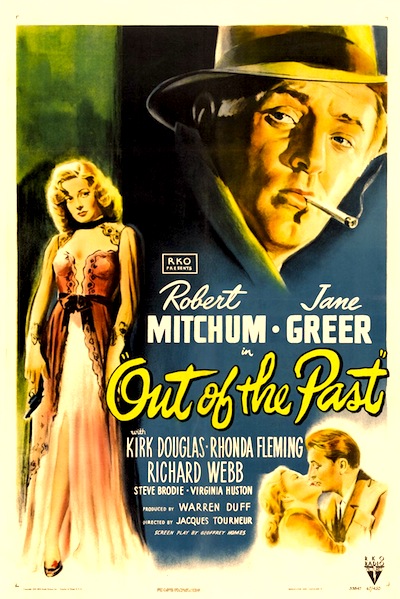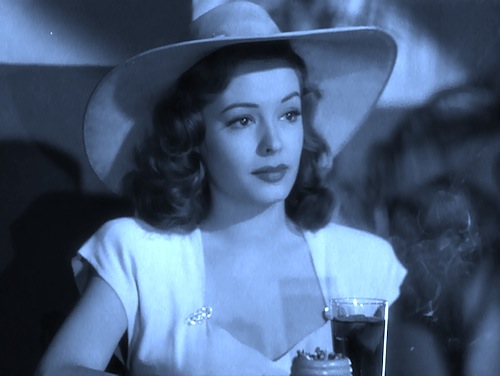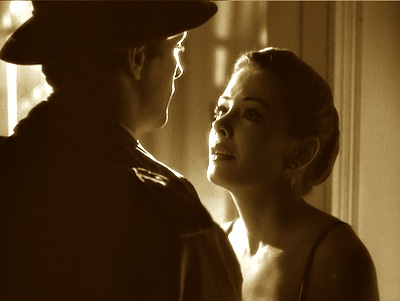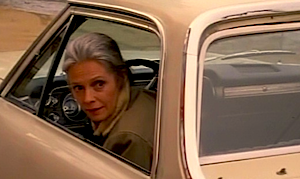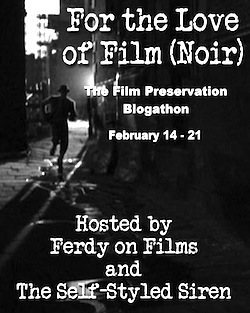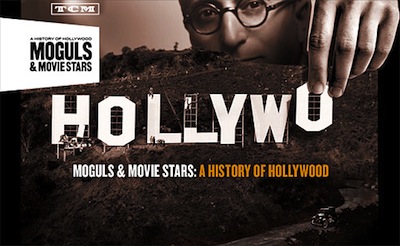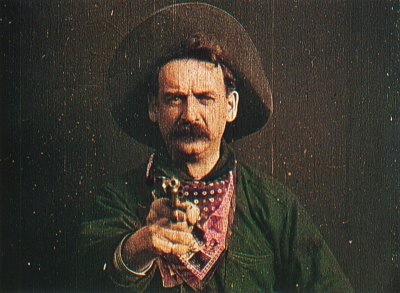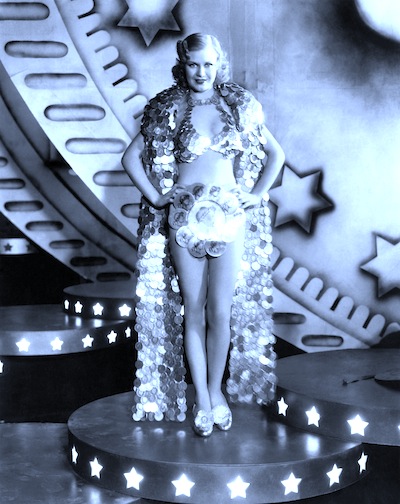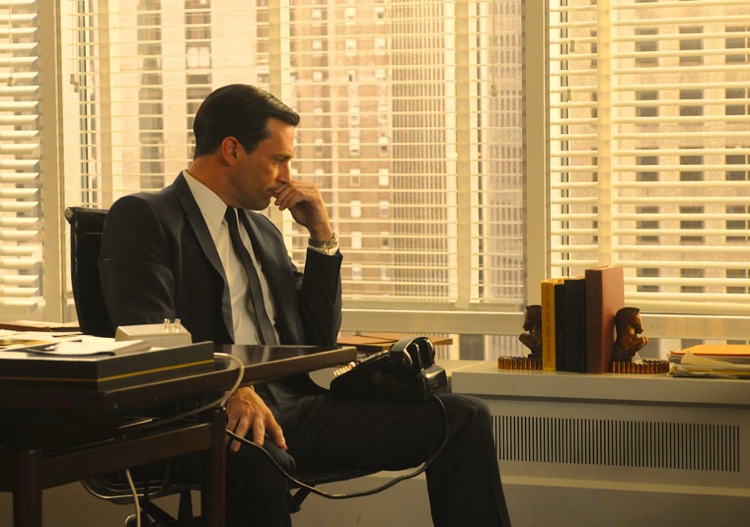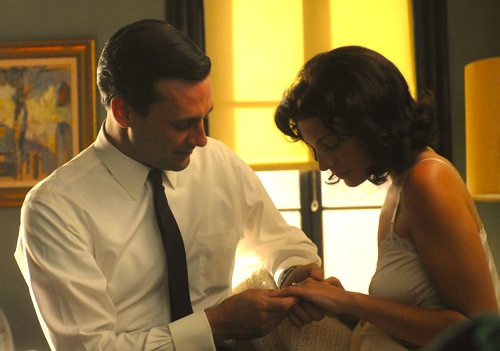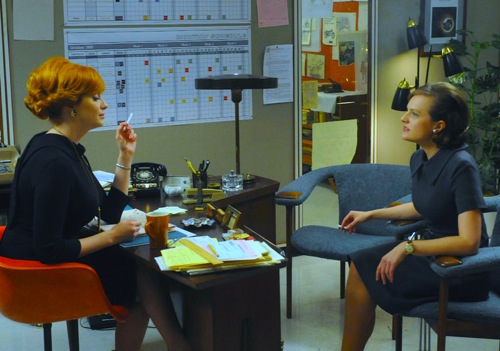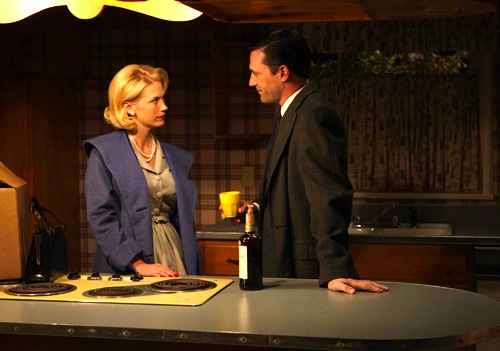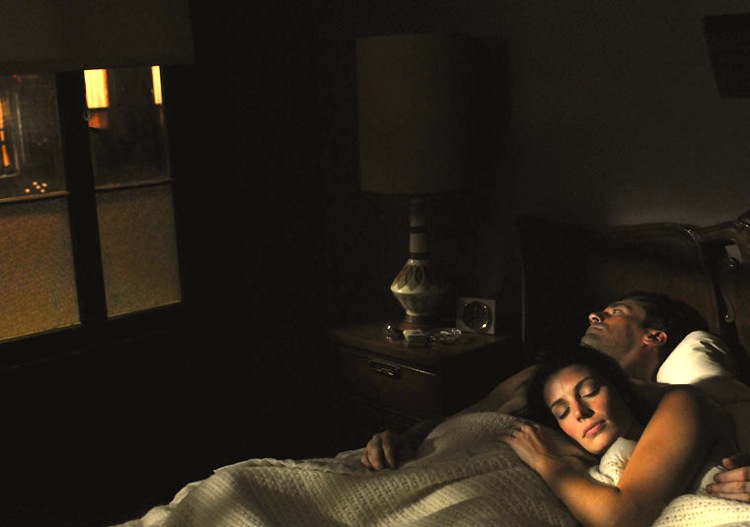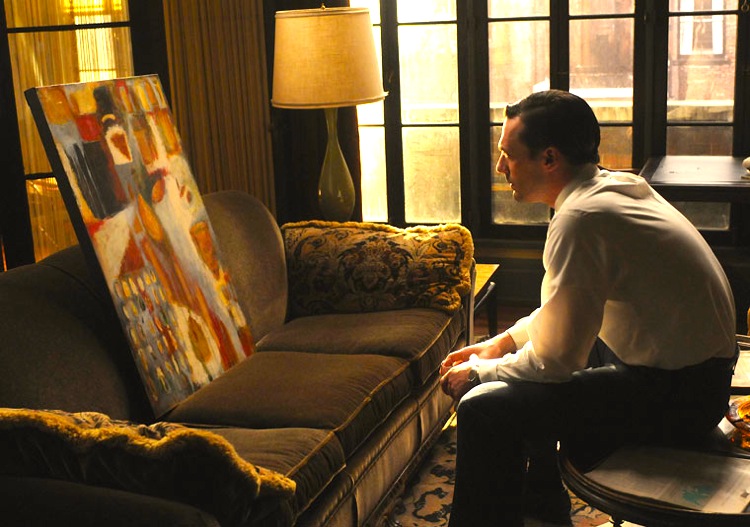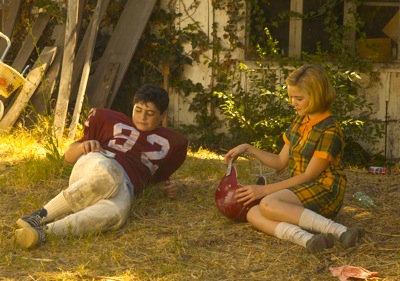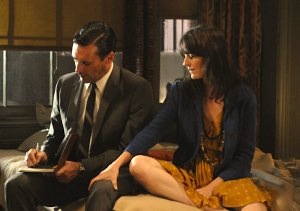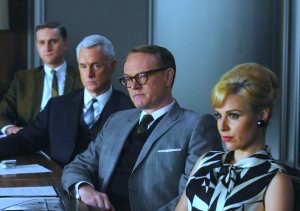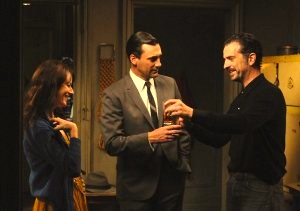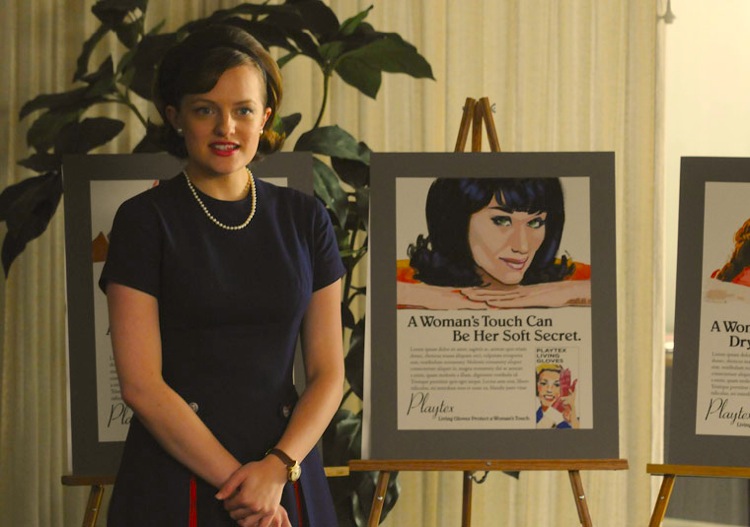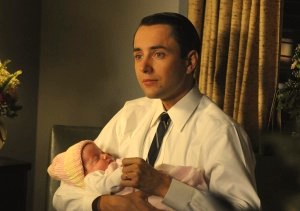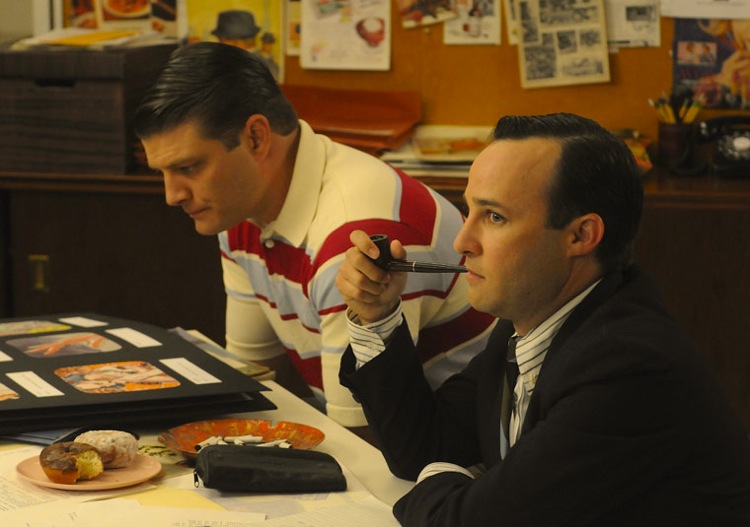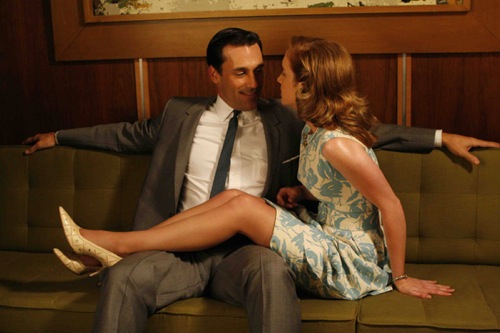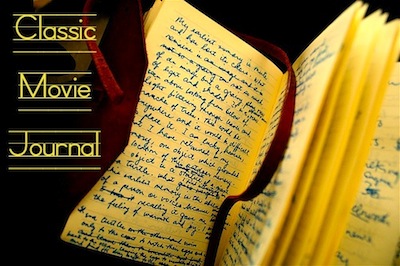 By Jennifer Baldwin. Before photography (and then Photoshop) took over the movie poster business, illustrators and artists ruled. Billboards, lobby cards, one sheets — these were the domain of the movie art masters, the geniuses who plastered our imaginations with color and drama and a parade of disembodied heads all in various states of emotion. Nowhere, it seems, were the old movie poster artists more unbridled than in their posters for film noir. Violence and sex are everywhere, and the artwork is always fun. Sometimes the posters are lush and romantic, other times chaotic and carnal. But always interesting, always worth looking at. Whether the movies turn out to be good or bad, the posters always manage to sell them.
By Jennifer Baldwin. Before photography (and then Photoshop) took over the movie poster business, illustrators and artists ruled. Billboards, lobby cards, one sheets — these were the domain of the movie art masters, the geniuses who plastered our imaginations with color and drama and a parade of disembodied heads all in various states of emotion. Nowhere, it seems, were the old movie poster artists more unbridled than in their posters for film noir. Violence and sex are everywhere, and the artwork is always fun. Sometimes the posters are lush and romantic, other times chaotic and carnal. But always interesting, always worth looking at. Whether the movies turn out to be good or bad, the posters always manage to sell them.
In fact, sometimes in the case of the old film noirs, the foreign artwork is better than the American. These foreign posters seem to get to the thematic heart of the stories because the artists weren’t as hampered by the studios to make sure a certain actor was featured or a movie star actress looked glamorous. And because foreign artists often had different sensibilities than their American counterparts, some of the best posters have a distinct strangeness to them that make the artwork even more compelling. These are my Top 6 picks for best film noir movie posters from foreign countries:
#6: Belgian poster for Criss Cross (Dir. Robert Siodmak, 1949)
Bold, violent, unrelenting — the red crisscross that dominates the center of the poster might be a bit crude and obvious for a movie titled “Criss Cross,” but it fits this nihilistic, underrated classic perfectly. With Yvonne De Carlo’s gorgeous face looming enigmatically above it, the “X” threatens to cross out both Duryea and Lancaster, two men who are both on a road to annihilation thanks to their lust for Yvonne’s intoxicating femme. What’s even more disturbing than those crisscrossed streaks of blood, though, is the look of cool, indifferent “who cares” on De Carlo’s face. That “who cares” look, as blood rains down, is the essence of the film noir “dangerous woman.”
#5: Italian poster for T-Men (Dir. Anthony Mann, 1948)
The artwork for this poster is flawless. One of the great things about old movie poster art is the way it tells a story. It’s not just one thing — one face, one situation, one image. These old posters take us into the story of the film, almost like the sequential art of a comic book, where we move from character to character, situation to situation, image to image. This T-Men poster gives us pieces of the story, while leaving us hungry for more. The death of a beautiful woman; a bag full of money; a brutal interrogation; a shootout at the pier; and at the center of it all, a heroic Dennis O’Keefe, trying to stand up for what’s right, but surrounded by crime on all sides. Film noir is a black and white genre, yet an eye-popping poster like this one reveals all of the intense, explosive emotions roiling beneath the silver-dark black and white sheen.
#4: French poster for F.B.I. Girl (Dir. William Berke, 1951)
I’ve never seen F.B.I. Girl. From what I’ve read on the internet, it doesn’t appear to be a very good movie, despite the presence of one of the all-time noir pros, Audrey Totter. But damn, if this poster isn’t the coolest thing ever! Coolness, of course, is one of the attractions of the genre. In fact, some might even argue that film noir isn’t a real genre at all, just a style. And style is about aesthetics, about the “look” of something. In the case of F.B.I. Girl, the movie itself is irrelevant. This poster — the look, the attitude, the style of it — is all we need. There’s a sexiness, a romantic sensibility, to the artwork that seems appropriate for the French. The pinkish red coloring; the playful elegance of the woman in the foreground; the hint of sexual violence between the man and woman in the background — all of it adds up to a retro modern design that is still absolutely fresh. I would kill to have this poster framed and hanging on my wall.
#3: French poster for Notorious (Dir. Alfred Hitchcock, 1946)
Symbolic, highly stylized, and unlike anything that would have been done in America, this is Hitchcock’s Notorious as only the French can render it. There’s the romantic passion of Cary Grant and Ingrid Bergman’s love affair, which dominates the poster and hangs over every frame of the film; the wine cellar key that is at the center of Bergman’s espionage and the symbol for her duplicity; and a very stylized version of Claude Rains within the key itself, uniting Bergman’s two acts of deception and betrayal, the betrayal of her husband’s work and his heart. The blue coloring gives the poster a sad romanticism, like the farewell of lovers on a rainy train platform; while the gold works as both the golden hues of warm sunlight (Bergman’s character wants to live in the light) and as the menacing gold of the cellar key. Interestingly, Rains’ face is half gold, half black, perhaps as a symbol for how his character is an evil yet weak man, not so much a villain to be hated but one to be pitied. More than just an advertisement for a movie, this poster works as a compelling piece of art.
#2: Italian poster for Force of Evil (Dir. Abraham Polonsky, 1948)
This poster just IS noir. One of the few from the era to be almost entirely in black and white, it captures the essential paradox of the genre. The menace of the gun; the threat of violence from a heavy bathed in shadow; the trapped look on the face of illustrated John Garfield — all of the doom and psychological terror of these films, and yet, amidst the crime and despair, there’s a stark beauty to the image. This is the tension at the heart of the noir style: beauty within the darkness. These are dark films, with dark themes. Murder, blackmail, exploitation, cruelty, selfishness, greed. But the artists who create these films, the painters of shadow and light, the directors and cinematographers — they create something beautiful to look at out of stories filled with evil. The illustration for this poster looks like it could be a still photograph from the movie itself. Filled with fear and violence and menace, and gorgeous.
#1: German poster for Double Indemnity (Dir. Billy Wilder, 1944)
This is number one simply because it looks like the face of Barbara Stanwyck is emerging from Hellfire, her seductive wickedness consuming MacMurray and Robinson in an inferno of murder and lies. If that doesn’t sum up Double Indemnity, I don’t know what does. Stanwyck is all heat in this one, a ball of fire of the deadly variety. MacMurray and Robinson, in their monotone hues, look almost like ghosts, like men reduced to mere shadows by the power of Stanwyck’s evilness. The real relationship in the movie is between the two men, of course. When their friendship is destroyed because of Phyllis Dietrichson, it is that destruction that pains us in the end. She is the devil who comes between them, bringing everything to ruin. This illustration, more than any other, captures these themes. And even more than that, it’s just an electrifying visual design. Everything about this poster just makes me want to watch the movie again right now. It gives new life to a movie I’ve seen dozens of times. And that is the mark of great movie poster.
This article is a contribution to the For the Love of Film (Noir) Blogathon, hosted by Ferdy on Films and The Self-Styled Siren. Check out the Facebook page HERE and consider supporting the cause of film preservation with a donation.
Posted on February 14th, 2011 at 11:05am.






